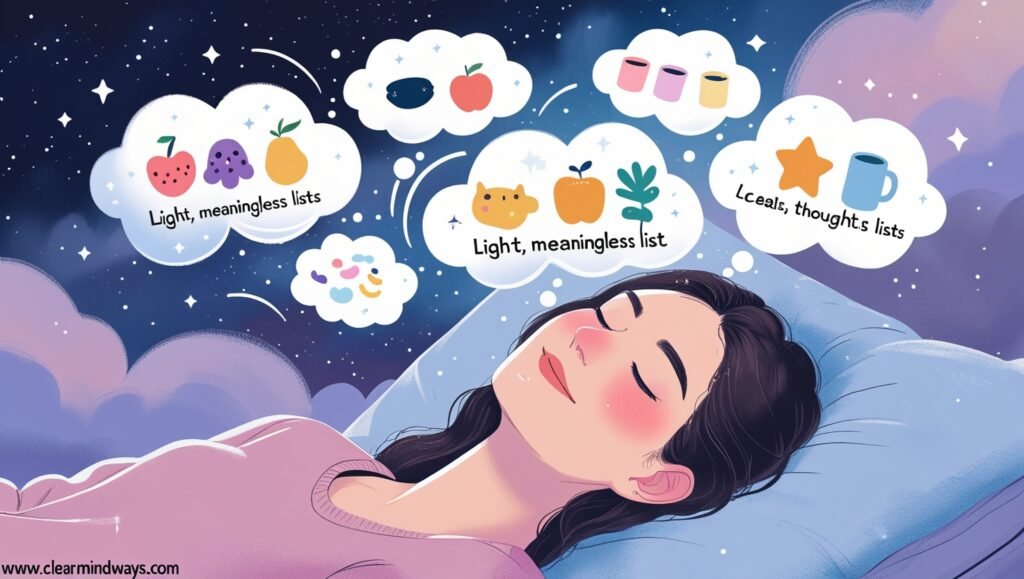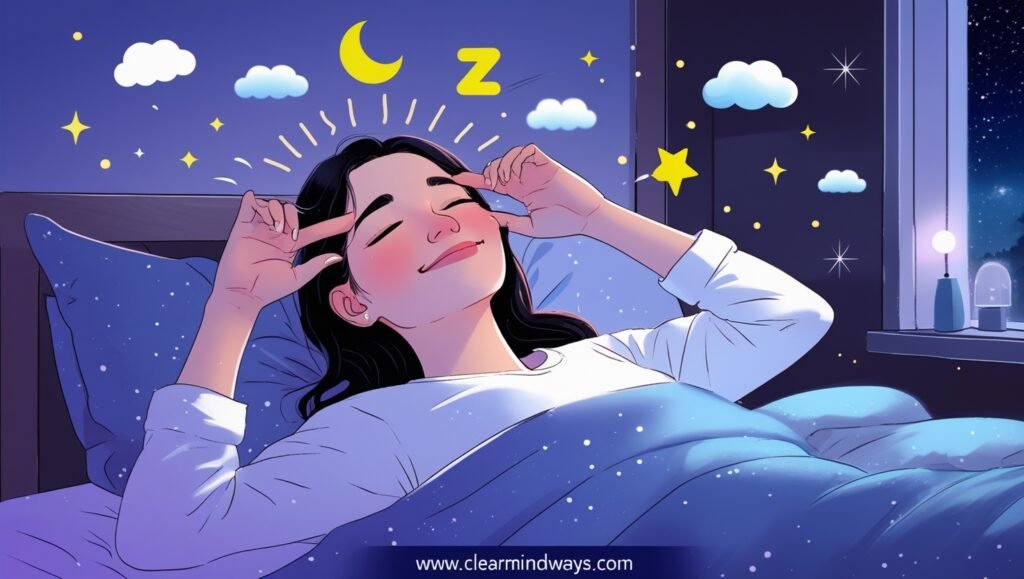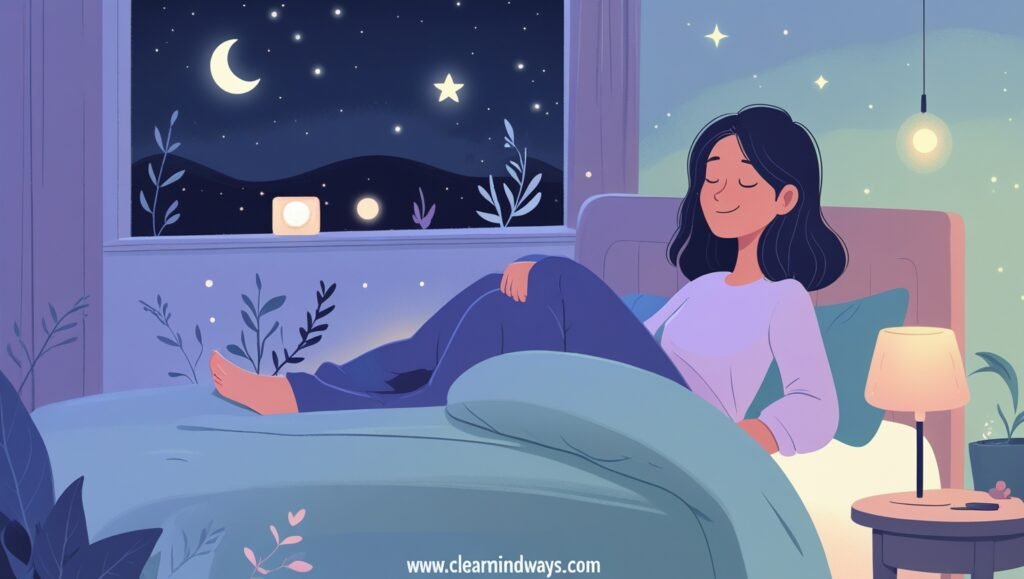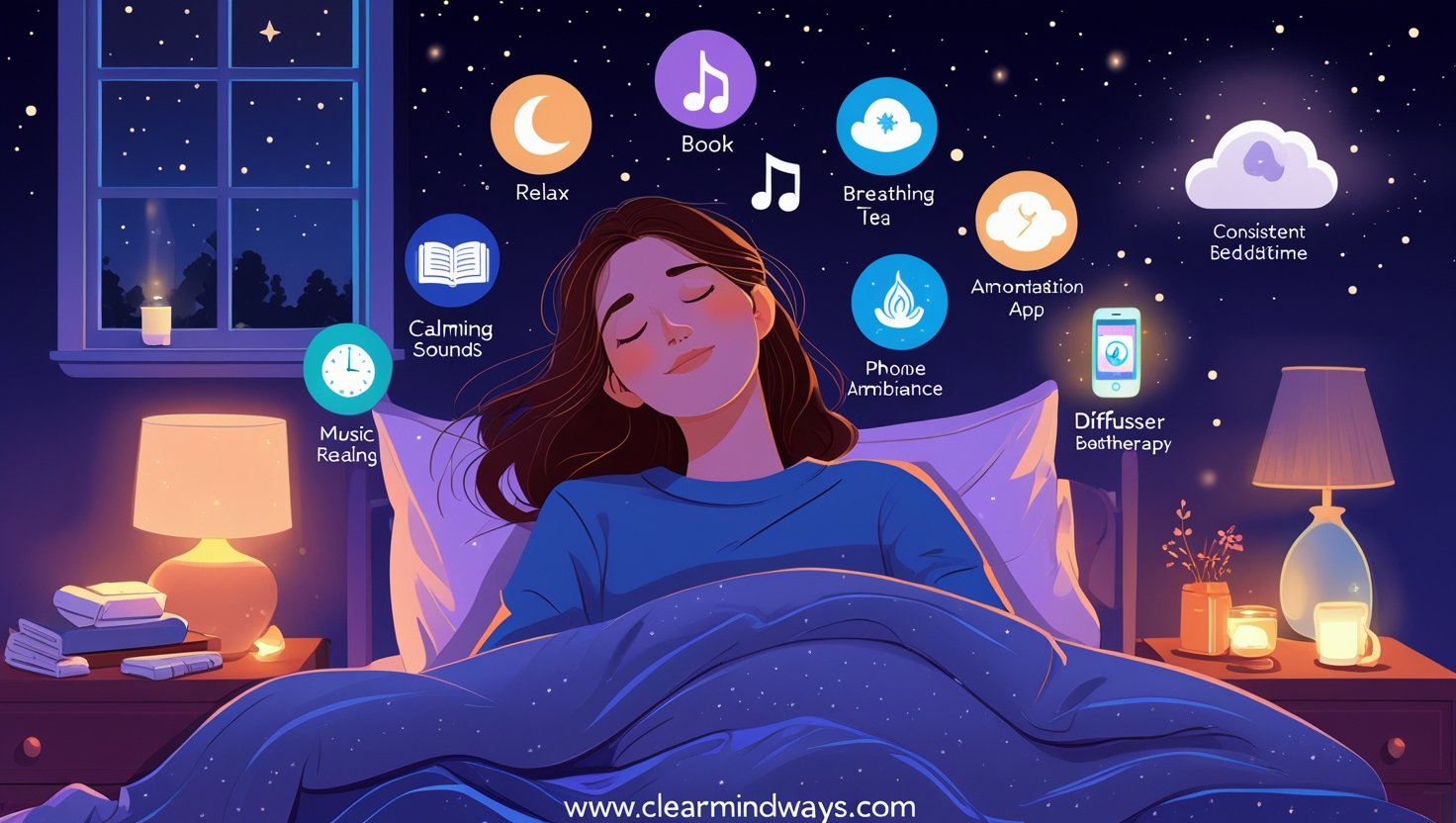Back to staring at the ceiling at 3 AM? You’re not alone. More than 60 million Americans suffer from sleep-related issues each year. If you find that you can’t fall asleep or that you’re constantly waking up, follow these expert-advised strategies from top sleep specialists to get the rest you need.
Thousands of patients have now been tested by sleep experts from Johns Hopkins, the Mayo Clinic and the Sleep Foundation using this “no drugs” approach. And these aren’t boilerplate tips — they’re tested techniques that will carry you through when you need them most.
Get a Little Proactive
Back to staring at the ceiling at 3 AM? You’re not alone. More than 60 million Americans suffer from sleep-related issues each year. If you find that you can’t fall asleep or that you’re constantly waking up, follow these expert-advised strategies from top sleep specialists to get the rest you need.
Thousands of patients have now been tested by sleep experts from Johns Hopkins, the Mayo Clinic and the Sleep Foundation using this “no drugs” approach. And these aren’t boilerplate tips — they’re tested techniques that will carry you through when you need them most.

What experts suggest you do
Begin turning off lights around your home after sundown. This signals your brain to produce more melatonin, your body’s natural sleep hormone. Opt for warmer tones, softer illumination in bedrooms and living areas.
Stow the phone, tablet, laptop at least one hour before bedtime. The blue light from screens deceives your brain into thinking it’s still daytime. If you must interact with devices, consider blue light blocking glasses or night mode settings.
Create a consistent bedtime routine. This could be as simple as doing a hot shower, reading a few pages of a book, doing very gentle stretches. Your brain learns to associate these cues with the fact that it’s soon time to sleep.
Ensure that your bedroom is cool, dark and quiet. The perfect sleep temperature is 65-68°F (18-20°C). Block light with blackout curtains or an eye mask. Think about purchasing earplugs or a white noise machine to manage noise.
Why this works: Your circadian rhythm (internal body clock) responds to environmental cues. By creating the right conditions early, you’re working with your biology instead of against it.
Distract Yourself with Meaningless Mental Lists
If your mind is racing, given your mind something boring to focus on is sometimes the best approach. Sleep experts refer to this as “cognitive shuffling” or “mental decluttering.”
This technique was invented by Dr. Luc Beaudoin, a cognitive scientist studying sleep, who discovered that people fell asleep faster when their minds were distracted by non-emotional, disjointed thoughts.
Expert-recommended mental exercises:
Pick a letter at random, A through Z. And now, how many things can you rattle off that begin with that letter? Make them entirely random: monkey, mailbox, muffin, microscope, moon. Don’t worry about making sense or being clever.

Count backwards from 100 by 7’s: It gives your brain something to do without exciting it. If you get lost, just begin again with any number.
Think about walking through your childhood home, room by room. Imagine every detail you can recall — the wall colors, the placement of the furniture, what was in all the drawers. Keep it factual, not emotional.
Find an imaginary grocery store. Take a stroll up and down every aisle of the store and just think about what you’re looking at. Produce section: apples, bananas, carrots. Dairy section: milk, yogurt, cheese. Keep it slow and detailed.
The science behind it: These actions use enough of your prefrontal cortex (the thinking part of your brain) to quell anxious thoughts, but they don’t excite you enough to stay up. You are boring yourself to sleep, basically.
Try to Stay Awake Instead
That seems backwards, but it is one of the most effective techniques sleep specialists use. Sound like a paradox? It’s called “paradoxical intention,” and the idea is to take the pressure and anxiety out of laying your head on the pillow and just letting yourself fall asleep naturally.
“When we force ourselves to sleep, we stimulate our sympathetic nervous system, which keeps us awake during the day,” says Dr. Julie Reil from the Sleep Disorders Center. Indeed, struggling against wakefulness can frequently make things worse.
How to Use Reverse Psychology on Your Brain:
Lay down on the bed and open your eyes, and tell yourself you’re just going to remain awake for a little longer. And don’t try to fall asleep at all. Try to relax and not pass judgment on your thoughts.
As soon as you find yourself getting sleepy, tell yourself in a kind way that you want to stay awake for a bit. This takes away the performance pressure that is the source of many people’s insomnia.

Concentrate on how good and relaxed your body feels, but remind yourself you are not trying to fall asleep yet. You’re just lying there, cuddling up with your bed.
Mentally make a decision to stay awake for 10-15 minutes more. The technique can put people to sleep in as little as 5 minutes.
Why it matters: Sleep is a simple, automatic biological function, yet it all-to-often eludes us. Removing the effort and anxiety normally associated with falling asleep allows your innate sleep drive to finally kick in. This approach is particularly beneficial for individuals who have developed anxiety around bedtime or who are prone to overthinking at night.
Or Just Get Out of Bed
There’s one rule about sleep that sleep experts agree on: If you can’t fall asleep after 15-20 minutes, get up. It stops your brain from associating your bed with being awake and frustrated.
Dr. Michael Grandner, the director of the University of Arizona Sleep and Health Research Program, refers to this as “stimulus control.” Your bed should be for sleep and sex and nothing else.
What to do when you get up:
Move to a room with low lighting. Avoiding bright overhead lights that can tell your brain it’s time to be fully alert.
Choose a quiet, boring activity. Some good alternatives include reading a book (but not a page-turner), doing a simple puzzle or listening to relaxing music. Avoid anything with screens if you can.
Keep the activity casual and even boring. The objective is not to have fun or be productive — it is to bide time until you feel sleepy again.
Listen to your cues that you are sleepy. “When you start to feel sleepy, or you are yawning or having trouble focusing on your activity, that’s your cue to go back to bed.
Related: Why Do I Overthink Everything? Psychology Behind It
Common mistakes to avoid:
Don’t do any cleaning, organizing or productive tasks. It can signal to your brain that nighttime is work time.
Do not pick up your phone; avoid your inbox; eschew social media. The blue light and invigorating content could keep you up for a couple hours longer.
Don’t eat or drink much. A small drink of water is fine, but eating may disturb your sleep even further.
Take a break from television and the internet. These activities can be overstimulating and make it harder to tell when you’re ready to sleep.
The 15-20 minute rule Most sleep experts say that if you are not asleep after about 15 or 20 minutes, you are better off getting up and doing something else, since staying in bed can just make things worse. You begin to associate your bed with stirring and fretting, not slumber.

Lower Your Heart Rate
When you’re unable to sleep, your heart may be racing faster than usual. This is your sympathetic nervous system at work — also the very same system that keeps you awake during the day. Sleep experts instead target the reverse system, your parasympathetic system, which is responsible for relaxation and sleep.
“4-7-8 breathing” — a calm-inducing breathing exercise — was first introduced to the world by Dr. Andrew Weil, the famous pioneer in integrative medicine. It’s built on ancient yoga practices of breath control but tailored for contemporary sleep issues.
The 4-7-8 breathing technique:
Touch the tip of your tongue to the roof of your mouth (the ridge behind your upper front teeth). It feels weird at first, but it can help moderate the breath.
- Breathe out entirely as you make a whoosh sound. Exhale as much air from your lungs as you can.
- Keep your mouth closed and take 4 counts to breathe in through your nose. Count slowly and steadily: 1-2-3-4.
- Inhale for a count of 7. This is where the magic happens — holding your breath can reset your nervous system.
- Exhale for 8, whooshing that sound out once more. This is longer than the inhalation.
- Repeat this pattern 3-4 times in all. You should not perform more than 4 cycles if you’re a beginner.
Other ways to slow your heart rate that experts suggest:
Progressive muscle relaxation: Begin with your toes and clench for five seconds, then release. Rise to your calves, thighs, tush, waist, hands, arms, shoulders, and face. This action can release physical tension that’s keeping your heart rate up.
Gentle yoga poses: Coming into child’s pose, lying on the floor with your legs up the wall, or twisting are all options for tapping into that parasympathetic nervous system. Stay in each position for 1-2 minutes and concentrate on long, deep breaths.
Visualize with breath: Breathe in through a metaphorical nose full of cool, calming air and exhale through an imaginary nose as if breathing out stress and tension. Visualize the cool air moving through your body and your heart rate slowing.
The physiological sigh: Take an inhale through your nose, followed by a smaller inhale on top of it. Exhale purposely through your mouth. This double-inhale method rapidly switches on your calm response mode.
Why heart rate is of interest for sleep: Your heart rate drops off as you fall asleep. By deliberately reducing it, you’re effectively sending your brain a hint that it can afford to calm down.

Write Down Whatever’s Freaking You Out
Racing thoughts are one of the worst sleep robbers. People who jot down their concerns before bedtime fall asleep approximately nine minutes quicker than those who do not, according to a study led by Dr. Shawn Youngstedt of Arizona State University’s College of Nursing.
The magic is not simply in the writing, it turns out, but in the writing in a certain way that helps your brain to process and let go of the day’s stresses.
The worry dump technique:
Keep a notebook and pen by your bed (not your phone — no screen screens). If you wake in the middle of the night with your head racing, turn on a small lamp or book light.
Set a timer for 5-10 minutes. “This keeps you from writing for hours and becoming more and more awake.
“Write down whatever is bugging you. Do not be afraid of grammar, spelling or coherence. Write them down, and get the thoughts out of your head and onto the page.
Be sure to list big worries and small ones. Presentation tomorrow” makes it onto the list, but so do “need to buy milk” and “nervous about Mom’s doctor appointment.”
The to-do list method:
Stop writing about problems and start writing about solutions. Jot down a short list of tasks you need to finish tomorrow or later this week.
Be specific. Instead of “work stuff,” type out “email client about project update” or “finish report by 3 PM.”
Time each task if possible. This helps trick your brain into thinking that you have a plan and don’t need to keep pondering the situation.
Place the list where you will see it tomorrow. This is communicating to your brain that you have managed the worry and have no further business to attend to.
The gratitude buffer:
Writing down worries, or tasks “I did” and “I will do” for a few minutes and then spend 2-3 minutes writing what is going well today,” or what you are grateful for, she wrote.
K.I.S. “Good coffee this morning,” “A nice text from Sarah,” “Made it without stressing through traffic.”
This can help shift your brain from anxiety mode to appreciation mode, which is conducive to sleep.
Why writing helps: When you worry in your head, your brain keeps those worries active because it thinks you have a better chance of survival that way. But when you write it down, it’s like telling your brain, “Hey, I’ve got it all taken care of, you can stop worrying about it.”
Research suggests the strategy is especially helpful for people who lean toward being planners or who are prone to worrying about forgetting important matters.
Get Back in Bed and Do Some Deep Breathing
After you’ve attempted these other methods, then go back to bed with a focused breathing game plan. Sleep experts suggest this as a go-between for consciousness and sleep.
It’s not about forcing sleep,” said Dr. Rebecca Robbins, a sleep researcher at Harvard Medical School, adding that it’s about creating an optimum physiological environment in which sleep can, hopefully, occur.
The return-to-bed protocol:
Keep your room cool, dark and quiet. Put everything back the way it was before you stood up.
Get comfortable, and don’t stress about achieving the “perfect” position. There isn’t one best sleeping position, sleep experts say; comfortable is best.
Begin with belly breathing (diaphragmatic breathing). Put one hand on your chest and the other on your belly. And when you’re breathing properly, only the one at the bottom will rise and fall.”
The box breathing technique:
Count to four in your mind as you inhale through your nose. Your belly, not your chest, should rise and fall.
Hold the breath for four counts. Don’t strain—this should feel comfortable.
Breathe out through your mouth for a count of 4. Let your belly fall naturally.
Empty, hold for 4 beats and return. This forms a “box” pattern which is very soothing to your nervous system.
(A)IF-based advanced breathing techniques for stubborn alertness and infinitheism fans:
The 10-to-1 countdown breath: Breathe in whatever way you’re used to, but start exhaling with the idea that you’ll count backward from 10. Begin again at 10 if your mind wanders. Few people make it past 3 or 4 of these before nodding off.
Body scan breathing: Breathe while mentally scanning head to toe. You will observe gradually that areas of tension without attempting to make them change. Just observe and breathe.
Mantra breathing: Select a word such as “peace,” “calm” or “rest.” Picture the word on each inhale and each exhale. It gives your mind something neutral to do.
If breathing techniques feel unnatural:
Some people feel hyper-alert to begin with if they are focusing on breathing. If this occurs, begin focusing on following natural breath without any engagement to control it.
Instead of monitoring your breath, just count it normally. Count each out-breath all the way up to 10, then begin again.
Concentrate on the pause between breaths— that natural interval of quiet that occurs all by itself.
The breathing mindset: Treat breathing exercises as a way to while away the time comfortably as your body naturally drifts closer to sleep, not as a way to force sleep to happen.
Try Not to Try So Hard
That may be the single most important recommendation from sleep experts: effort is the enemy of sleep. The more you desperately want to fall asleep, the more wakeful you become.
Guy Meadows, the founder of The Sleep School, believes that fighting the insomnia too often exacerbates the problem. He calls this the “effort trap” — our efforts to regulate sleep are in fact inhibiting it.
The acceptance approach:
Rather than battling wakefulness, try to greet it with acceptance. Say to yourself, \”I’m awake at the moment, and there’s nothing wrong with that. I’m under no obligation to immediately fall asleep.”
See the difference being awake versus being upset to be awake. The first is only a temporary condition; the second provides stress that will allow you to stay awake longer.
Remember that rest is valuable even if you’re not totally asleep. Even lying in a comfortable bed in silence is still giving your body and your brain a rest.
Releasing sleep performance anxiety:
Stop checking the clock. Clock-watching creates pressure and anxiety. How to drop out of time: Turn your clock around so it is facing away from you, or your phone upside down.
Yes try to let go of all expectations as to how much sleep you “should” be getting. Some nights you will sleep 8 hours, and other nights 5. Actually, your body is pretty good at adjusting.
Stop calculating how tired you’ll be tomorrow. This type of future-directed concern keeps your mind busy in a time when it should be winding down.
The mindfulness approach to sleeplessness:
Notice your thoughts but don’t attach to them. Consider thoughts as clouds that pass through the sky — you can observe them without grasping them.
Practice the “noting” technique. When you see your mind drift toward some worry or tomorrow’s plans, just call it “thinking” and gently lead your attention back to your breath or body.
Acknowledge that some nights are going to be worse than others. This isn’t about anything being wrong with you or about your never being able to sleep again.
When perfectionism interferes with sleep:
Many people who wrestle with sleep are overachievers who also seek to “get good at sleeping.” Except that sleep is not a skill you can master, it’s a process you allow.
Allow yourself to have less than perfect slumber. Even people who are bad sleepers get some deep sleep through the night, generally more than they think.
Concentrate on how you feel through the day rather than the amount of sleep as reported by your fitness tracker. There are people who do well on less sleep than other people.
The paradox of sleep: The harder you long for it, the further away it creeps. The less you stress about not having it, the more likely it is to arrive.
Or Maybe Plan How You’ll Get Some Sun in the A.M.
Your morning routine is every bit as important to good sleep as is your nighttime routine. Sleep scientists know that light exposure in the morning does wonders for your circadian rhythm, and for what you do when you try to fall asleep after that.
If you’ve had a night of poor sleep, Dr. Phyllis Zee of Northwestern University’s Center for Circadian and Sleep Medicine suggests to make a point to get bright light exposure within the first hour of waking up.
Here are morning light strategies for better sleep tonight:
Get outside within half an hour of waking. Even an overcast day is much, much brighter than any indoor lighting. Go for 10 to 15 minutes at least, longer if it’s overcast.
If you can’t be outdoors, hang out near the brightest window, with your coffee or tea. Point yourself toward the window, so the light hits your eyes (although not the sun directly).
If you live in an area with little winter sunlight, or you wake up before dawn, use a light therapy box. Find a box that gives 10,000 lux of light and use it for 15 to 30 minutes.
If you can, go for a morning walk, even if it’s just around the block. Combine that light exposure with a bit of gentle movement and you can help reset your internal clock.
The timing also matters: The effects of light on sleep are strongest if exposure occurs in the morning. And in fact, evening light might actually make sleep trouble worse (since it can extend your circadian rhythm).
The first thing you think about when you’re trying to go to sleep at night and the first thought you have when you wake up.
Rather than worry about tomorrow, how about looking forward to it? Consider where you will go for morning light.
Visualize your ideal morning routine. It might be your coffee on the porch, a walk with your dog or reading outside before the workday begins.
Schedule something small you can do that gets you outdoors. This gives your brain something to concentrate on besides sleep anxiety.
Other circadian rhythm helpers:
- Eat breakfast within one hour of getting up. Food is another cue that helps regulate your internal clock.
- Avoid afternoon caffeine. Caffeine should be avoided 6-8 hours before going to bed, according to sleep experts.
- Maintain consistent waking and sleeping hours even on weekends. Your circadian rhythm has a fetish for predictability.
- Keep the lights low in the evening to ready yourself for a good night’s sleep tomorrow night. Begin decreasing the level of light you’re exposed to 2-3 hours before you want to go to sleep.
Why morning light is important: Your brain has a master clock that is sensitive to light and dark. Exposure to morning light is what helps this clock keep pace with the 24-hour day, without which you sleepiness at night would occur later than normal.
Even if you slept poorly last night, light in the morning will help you sleep well tonight.
And If All Else Fails…
At times, no matter how hard you try, sleep simply doesn’t happen. Sleep doctors want you to know this is normal and not a sign that you are somehow messing up.
Remember Dr. Matthew Walker, author of “Why We Sleep,” points out, that everyone has sleepless nights every so often, and they generally go away on their own after a few days.
When to seek professional help:
If you’ve been struggling with sleep for more than three weeks, it’s time to talk to a health care professional. Insomnia may become a long-term condition which, with help from a professional, can usually be improved.
Medical professionals diagnosis and treat sleep disorders such as sleep apnea, restless leg syndrome and circadian rhythm disorders.
If sleep problems are impacting your ability to function during the day, your mood or your work performance, see a physician about your condition.
Frequently Asked Questions
Q: How long should I give these techniques a go before writing it out off for the night?
A: “Relax about 2-3 hours in total,” says sleep expert. If you’ve been cycling through these tactics for longer than that, it tends to be more productive to acknowledge that tonight might be a short-sleep night and concentrate on resting instead of sleeping.
Q: Waking repeatedly during (and between) sleep cycles is normal.
A: Yes, I think waking up 3-5 times/night is totally normal. Most of them don’t recall these momentary awakenings. It becomes an issue only when you can’t get back to sleep within 15-20 minutes or if the awakenings repeatedly last longer than 30 minutes.
Q: If I am having trouble sleeping, should I take melatonin?
A: Melatonin is beneficial for some people, but time and dosage count. For the most part, sleep experts tell me that we really don’t want much; in fact, your body will likely respond best to about 0.5-3mg two to three hours before your target bedtime (not when you’re already lying in bed awake). As always, check with a doctor before beginning any sleep supplements.
Q: What if I’m concerned that I won’t have enough energy for work tomorrow?
A: One poor night of sleep seldom wreaks as much havoc on performance as we fear. Intentionally focus on being hydrating, getting some sunlight in the morning and try to stay away from any extra caffeine (since that will only perpetuate the sleep issue). It turns out most people are surprisingly resilient after one night of poor sleep.
A: How dark is best?
A: You want to be able to see your hand when you hold it in front of your face in your bedroom! Melatonin production may still be compromised by low levels of light. Think about blackout curtains, eye masks or covering LED lights on electronic devices.
Q: Is it healthier to sleep in a cold or warm room?
A: Sleep scientists advise on cooler environments to sleep at, 65-68°F (18-20°C) is an ideal temperature. Your body temperature decreases as you fall asleep, and a cool room can encourage that drop. And if your room is too warm, you’ll not only have trouble falling asleep, but you may also have trouble staying asleep.
Q: I lie awake at night because my partner’s sleep habits keep me up.
A: Communication is key. Bring up the problem in the daytime, not when you’re both tired. Think separate blankets, a bigger bed or potentially even temporary separate sleeping arrangements while both of you work on sleep hygiene. Many couples sleep better apart, and it’s not an indictment of the relationship.
Q. How can I tell if I need to see a sleep specialist?
A: Consider professional assistance if your sleep problems persist over 3-4 weeks, affects daytime functioning, if you snore loudly or experience stopping of breaths, or if there are any abnormal behaviors while sleeping. Your regular doctor can give you an initial evaluation and, if necessary, a referral.
